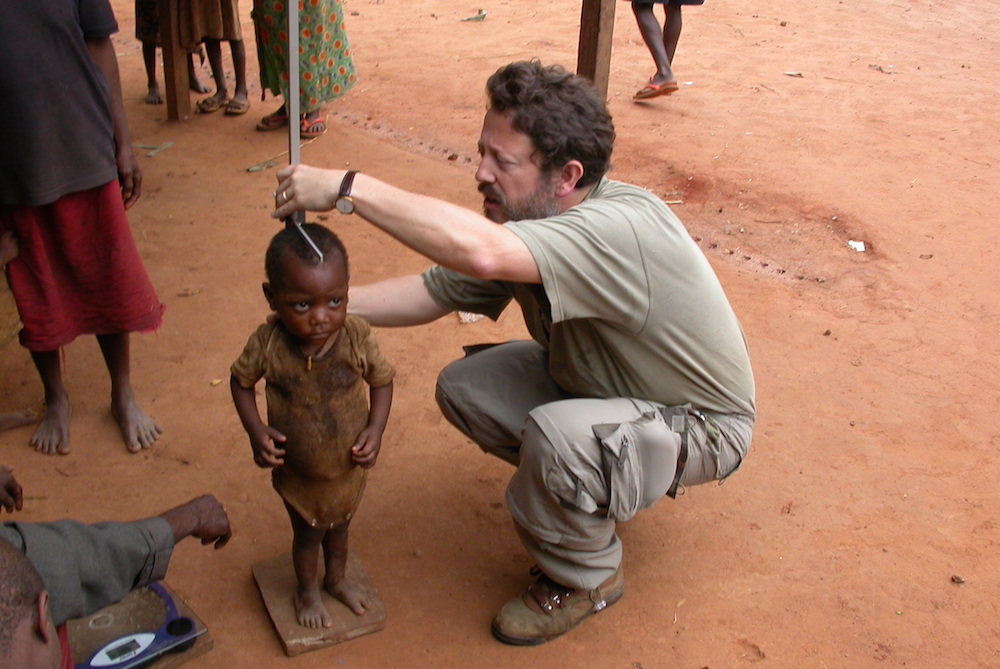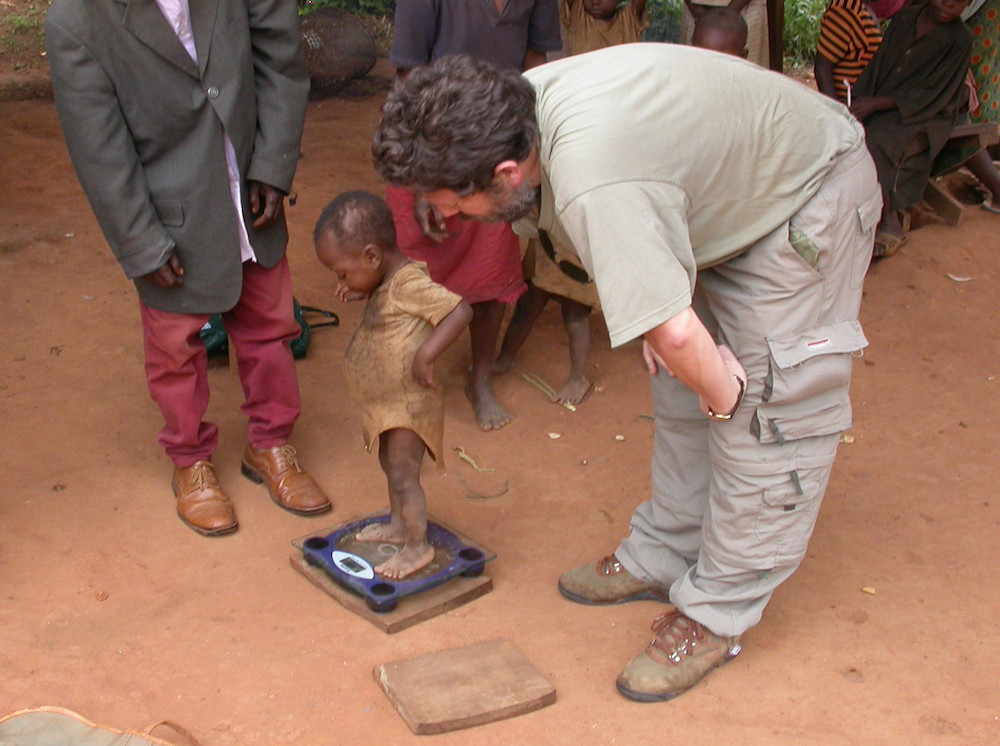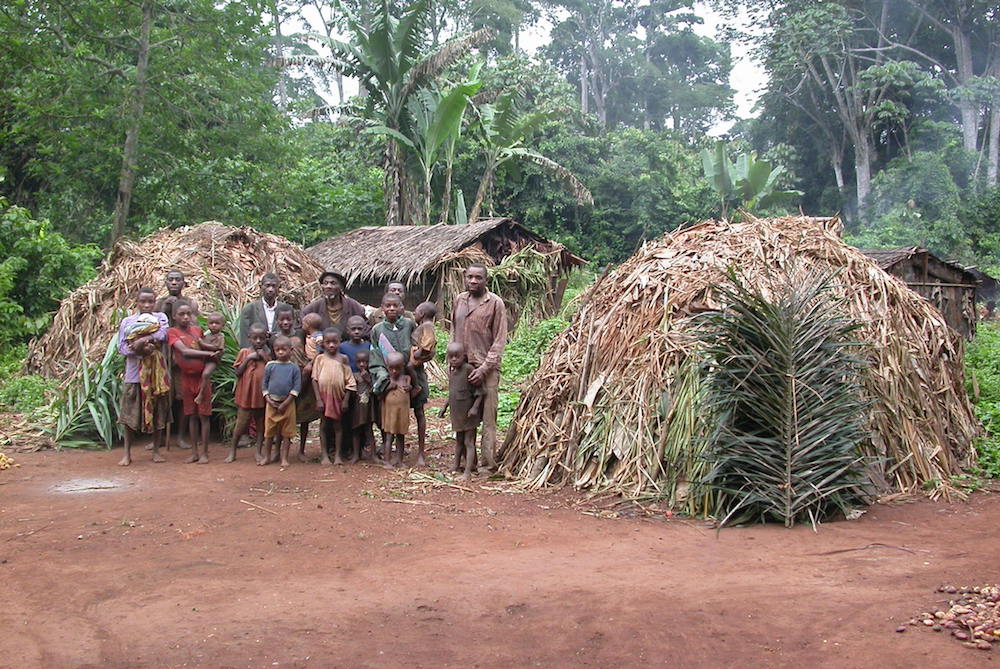Not All African Pygmy Groups Grow the Same Way

Not all African people of short stature — often referred to as Pygmies — grow alike, a new study finds. The Baka people of West Africa are born at typical sizes but grow much more slowly during their first two years of life than non-Pygmies do, the researchers said.
However, other African Pygmy tribes grow differently: In East Africa, the Sua and Efe peoples give birth to smaller-than-average babies. These different growth processes are an example of convergent evolution, in which two groups reach the same result — short stature — in different ways, said the study's lead author, Fernando Ramirez Rozzi, a researcher of evolutionary biology at the French National Center for Scientific Research in Paris.
The findings also suggest that being short is advantageous in the African rainforest where Pygmies live, he said. For instance, smaller people tend to require fewer calories and likely don't get as hot as larger people do when navigating the rainforest, because small bodies generate less heat, he added. [The Awa: Faces of a Threatened Tribe (Photos)]
Measurement records
The Baka people live in southeast Cameroon. Since the 1970s, a group of medically trained nuns have recorded the births of the Baka people, weighing babies from birth to age 3. Unfortunately, the records from the 1970s and 1980s were lost, but the researchers in the new study had access to records from 1988 onward.
In 2007, the researchers began visiting the Baka people. They obtained informed consent to continue measuring the height and weight of each individual with a known birth record. This allowed them to record measurements of several hundred people over time, Ramirez Rozzi said.

The study relied on the measurements of two groups: one covering children from birth to age 3, which included 481 children; and another comprising people ages 2 to 25, which included 554 individuals.
Sign up for the Live Science daily newsletter now
Get the world’s most fascinating discoveries delivered straight to your inbox.
The researchers calculated growth rates and then compared them to those of a group of French children whose growth had been recorded starting in the 1970s.
Baka babies were within the same standard size limits as the French babies, the researchers found. But the Baka children grew at slower rates during their first two years of life than the French children did, Ramirez Rozzi said. [The 7 Biggest Mysteries of the Human Body]
For instance, at 15 months of age, the Baka had an average growth rate of about 2.2 lbs. (1 kg) per year, while the French children grew about 2.78 lbs. (1.26 kg) per year, on average. Meanwhile, at age 2, Baka girls and boys weighed an average of 22 lbs. (10 kilograms), whereas the French children weighed 26 lbs. (12 kg), on average.
At age 3, the average height of the Baka boys and girls was 2 feet 9 inches (84 centimeters), and the average height of the French children was about 3 feet 2 inches (96 cm), Ramirez Rozzi said.
The Baka's slow growth rates during infancy explains the lasting short stature that can be seen in children from age 3 onward, even though their growth follows typical rates afterward, Ramirez Rozzi said. For instance, Baka teenagers undergo growth spurts, and similar to other cultures, Baka women tend to stop growing at around age 18, and men do so at about age 20.
"Our results suggest that genetic and endocrine [hormonal] processes acting during infancy are involved in establishing differences between pygmy and non-pygmy groups by adapting adult [stature] to environmental pressure," the researchers wrote in the study.

So, even though genetic studies suggest that African Pygmies share a common ancestor that split from the Bantu-speaking people about 60,000 years ago and live in similar environments, they developed their short stature differently over time, the researchers said.
"In other words, while the small adult stature in eastern pygmies (Efe and Sua) is the result of a particular growth pattern during prenatal life, the pygmy [appearance] in the Baka results from a slower rate of growth during infancy," the researchers wrote in the study.
The new research provides "a great, rare data set of longitudinal growth profiles for a west central African rainforest hunter-gatherer population," said George Perry, an assistant professor of anthropology and biology at Pennsylvania State University who was not involved in the study.
"It provides an unprecedented look into the pattern of growth resulting in the small adult body size, or the 'Pygmy phenotype [appearance]' that is a trait common to this and other rainforest hunter-gatherer populations worldwide," he told Live Science.
Moreover, Perry said the findings are consistent with other research he and his colleagues published in 2014 that suggested various Pygmy groups have different genetic mechanisms responsible for their short stature, he added.
The new findings were detailed online Tuesday (July 28) in the journal Nature Communications.
Follow Laura Geggel on Twitter @LauraGeggel. Follow Live Science @livescience, Facebook & Google+. Original article on Live Science.

Laura is the archaeology and Life's Little Mysteries editor at Live Science. She also reports on general science, including paleontology. Her work has appeared in The New York Times, Scholastic, Popular Science and Spectrum, a site on autism research. She has won multiple awards from the Society of Professional Journalists and the Washington Newspaper Publishers Association for her reporting at a weekly newspaper near Seattle. Laura holds a bachelor's degree in English literature and psychology from Washington University in St. Louis and a master's degree in science writing from NYU.









